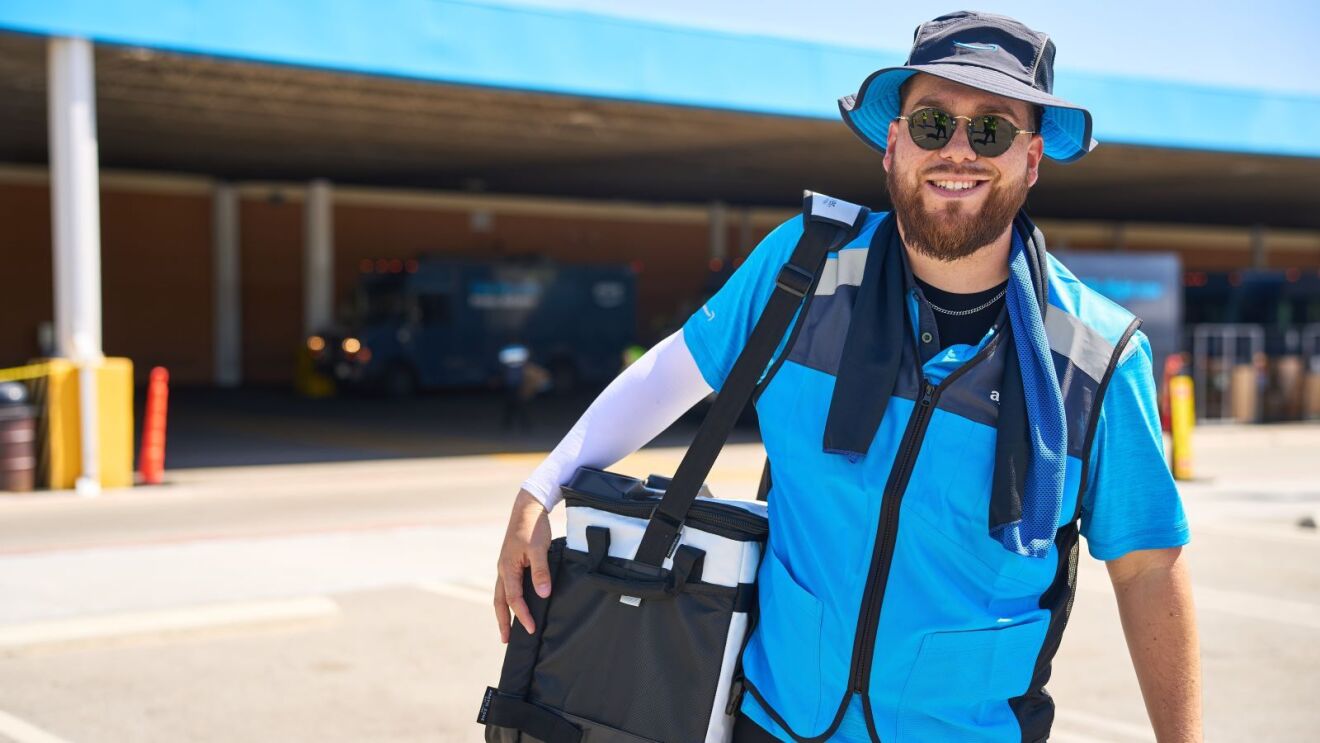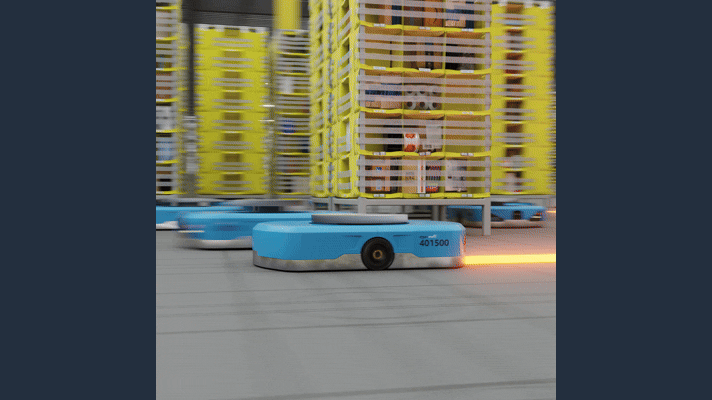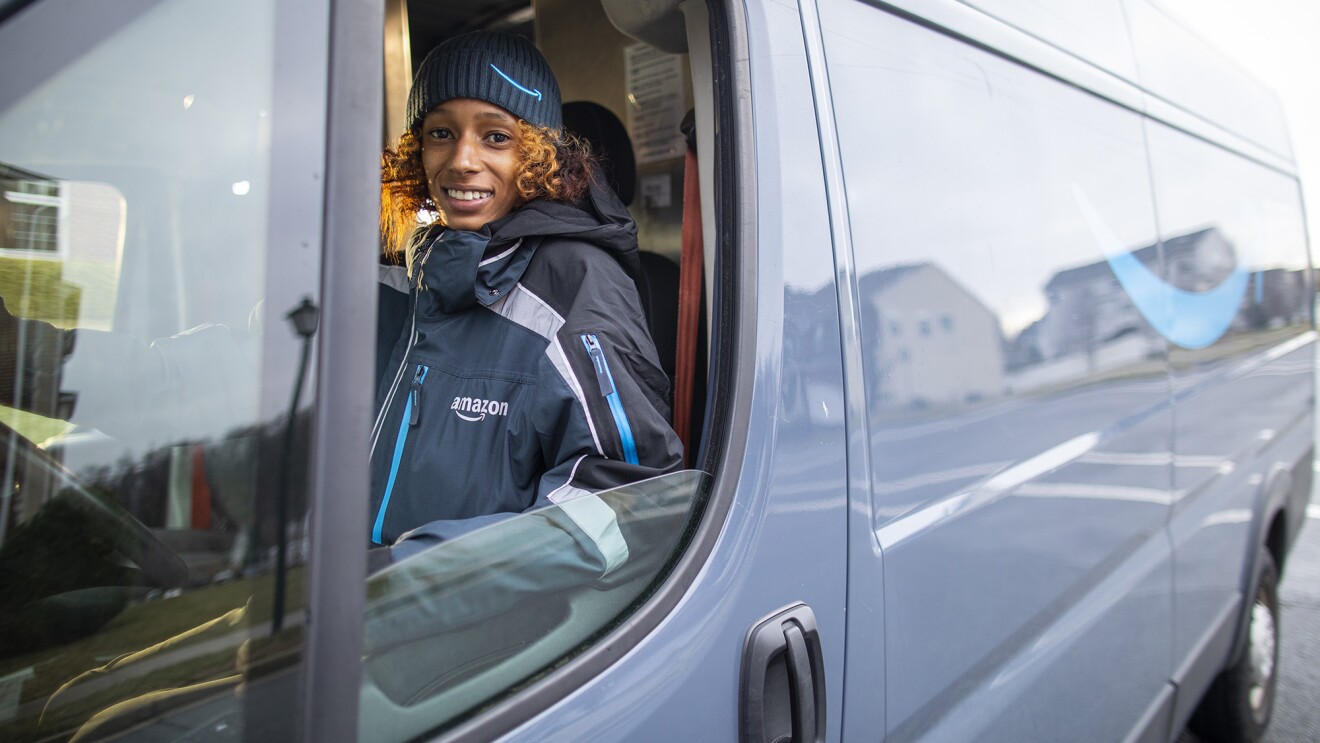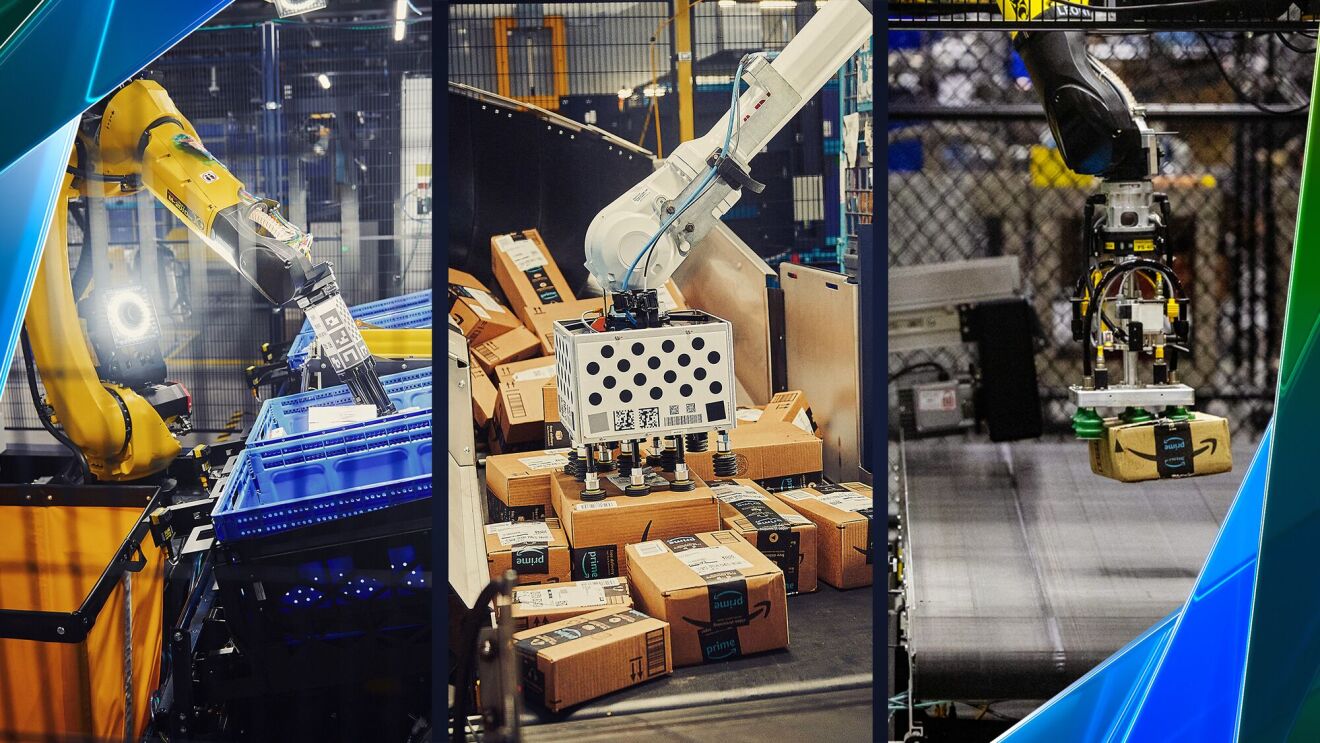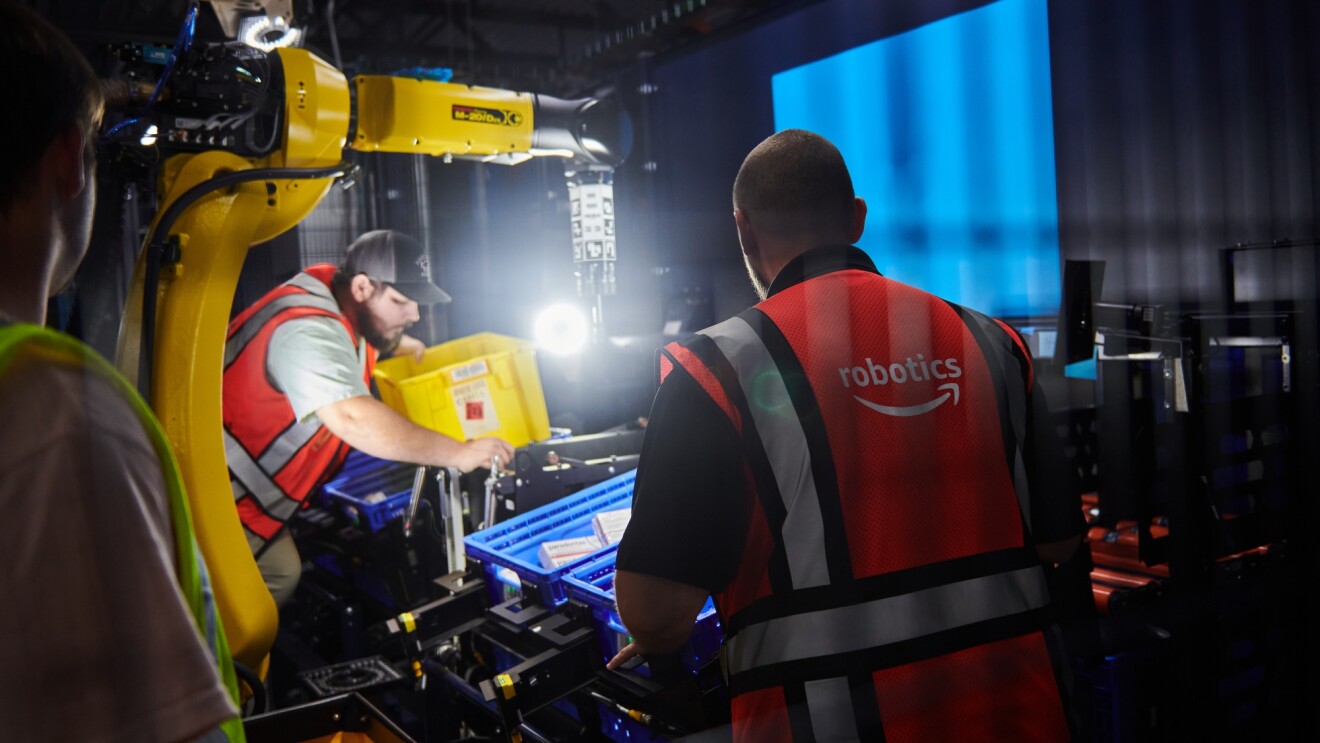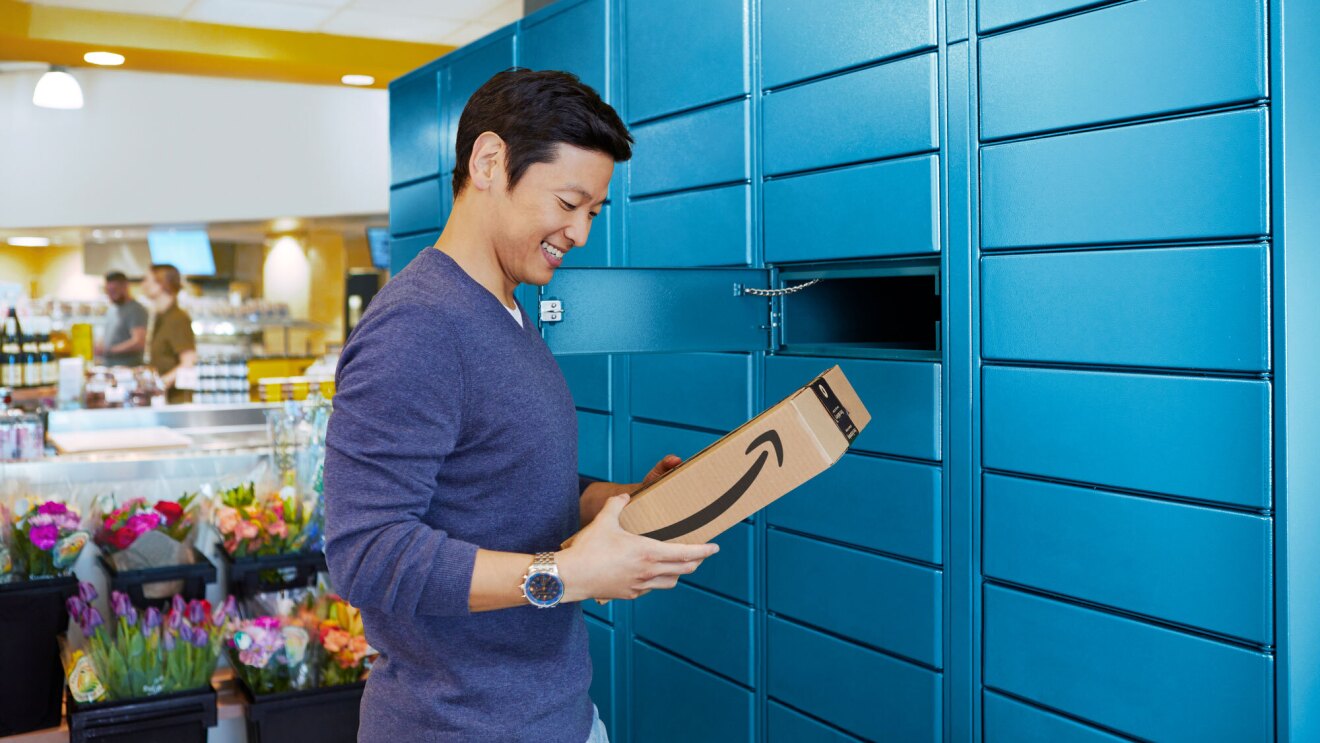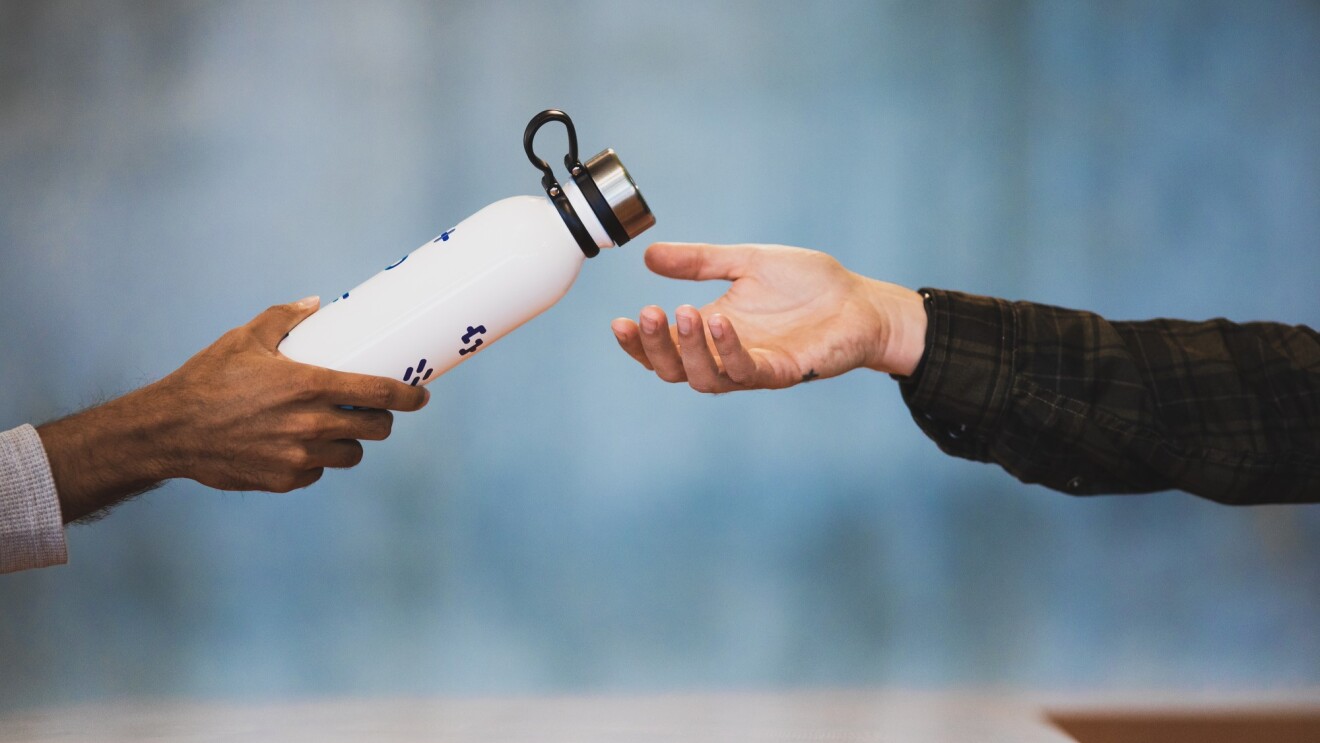Page overview
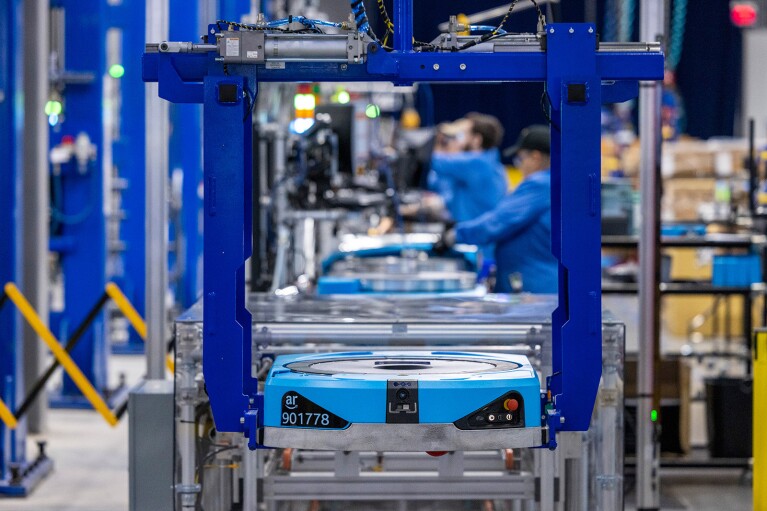
Amazon is the world’s largest manufacturer of industrial robotics. Building our own robotics lets us design customized solutions where we can put safety first. We can also better control costs and support the local economy while creating new and exciting jobs.
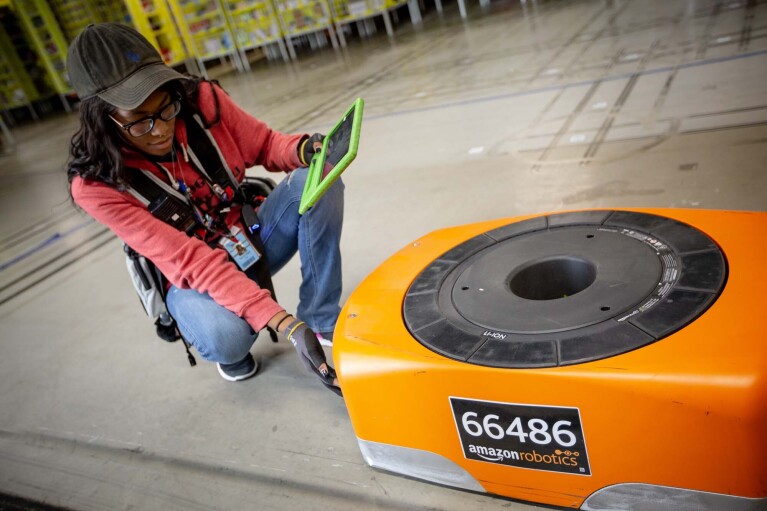
Amazon has created hundreds of new categories of jobs since introducing robotics in our fulfillment network in 2012, including roles like flow control specialists who manage day-to-day workflows in fulfillment centers, amnesty floor monitors who facilitate safe interactions with mobile robots, and reliability maintenance engineers who help keep all of the technology running at our sites.

Our Mechatronics and Robotics Apprenticeship Program helps people gain the skills necessary to land jobs in high-demand fields like robotics and software engineering. Employees who have graduated from this free program have earned certifications, learned new skills, and earned pay increases of about 40%.
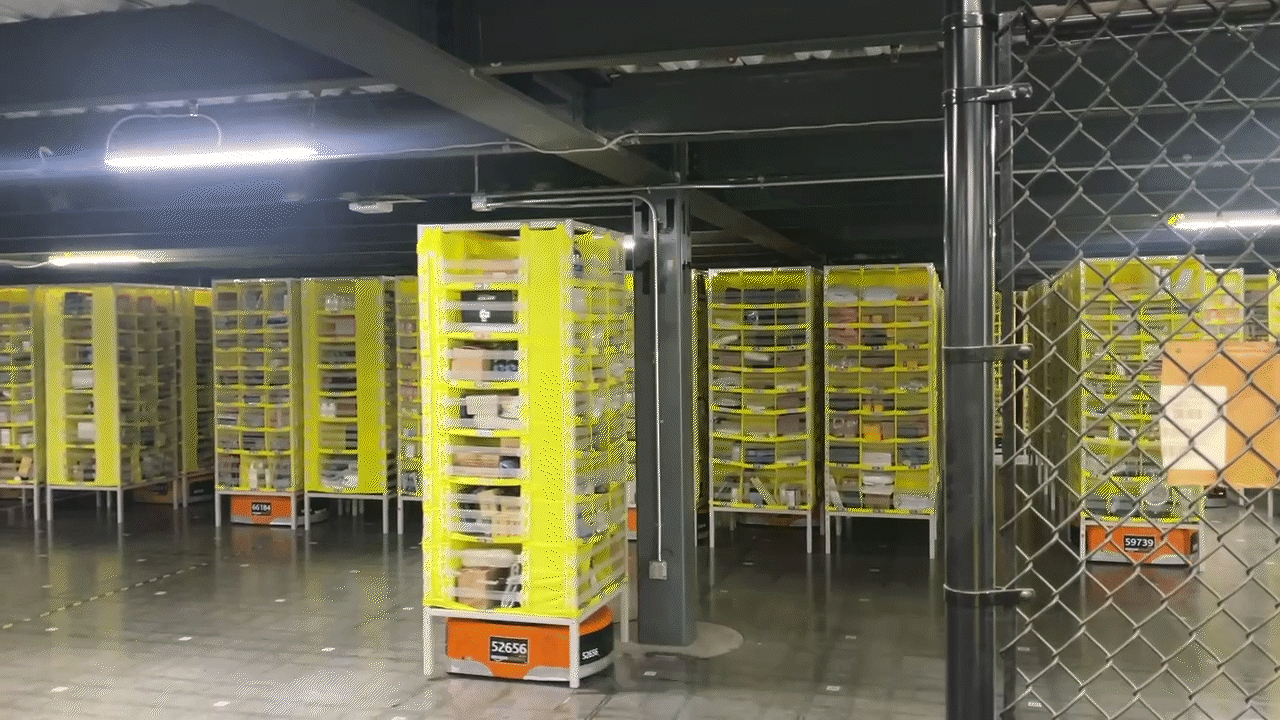
Amazon is currently using the help of more than 750,000 mobile robots around the world to fulfill customer orders. These robots travel to various locations in our fulfillment centers to pick up mobile shelves of product and deliver them to employees who are working at ergonomic workstations.

75% of all customer orders globally are delivered with the assistance robots working within our operations.

Our mobile robots operate using the Amazon Web Services (AWS) cloud. They take directions from cloud-based systems to navigate along a grid of encoded markers throughout the facility.
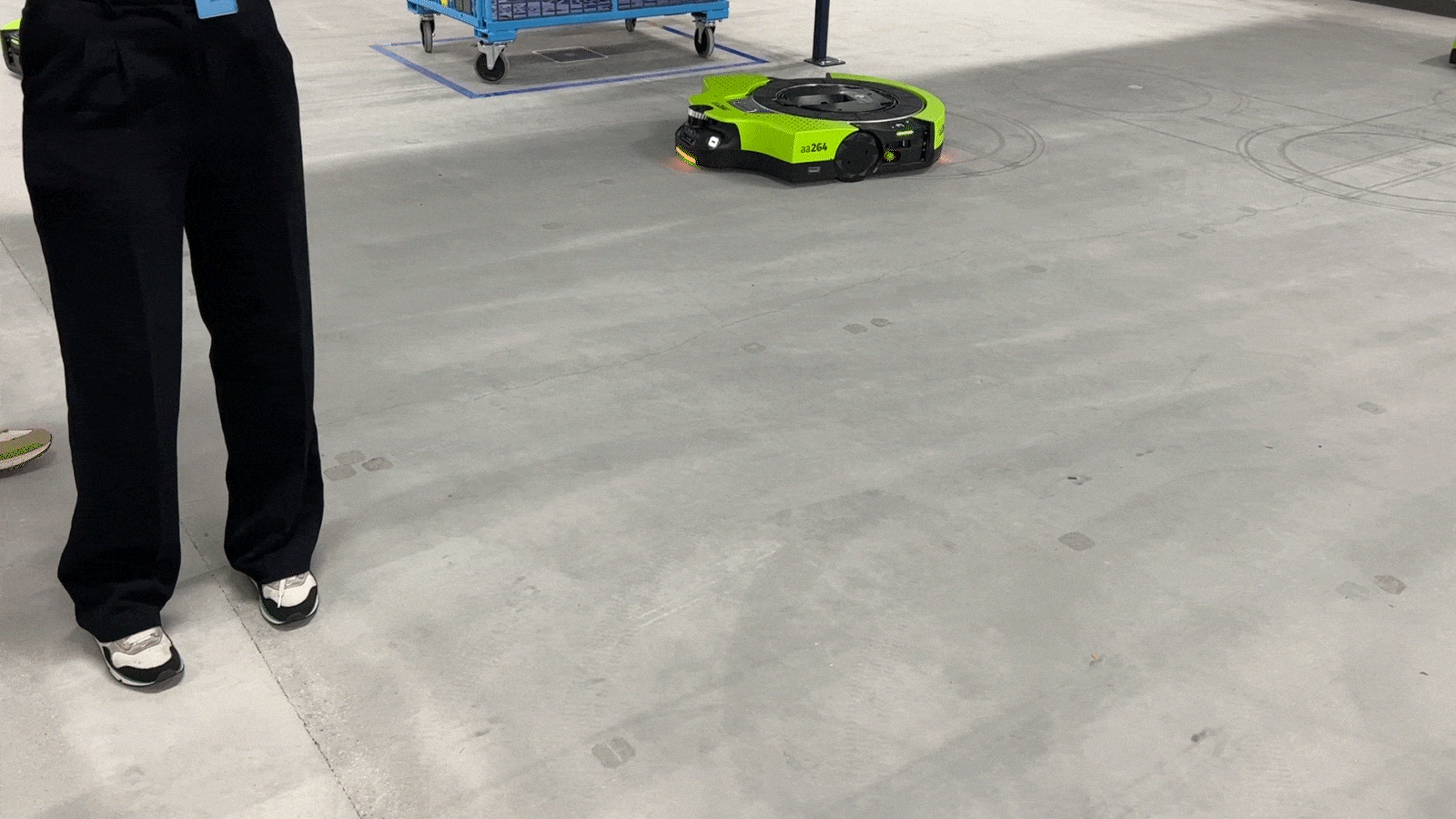
Proteus is our first Autonomous Mobile Robot (AMR). Proteus autonomously navigates through our facilities using advanced safety, perception, and navigation technology developed by Amazon. Historically, it’s been difficult to incorporate robotics into areas of our facilities where people are working in the same physical space as the robot. AMRs like Proteus change that.

We’ve started deploying a new robot called Titan, which can lift up to 2,500 pounds. The robot will carry larger, bulkier items like small household appliances and pallets of pet food across our fulfillment centers.
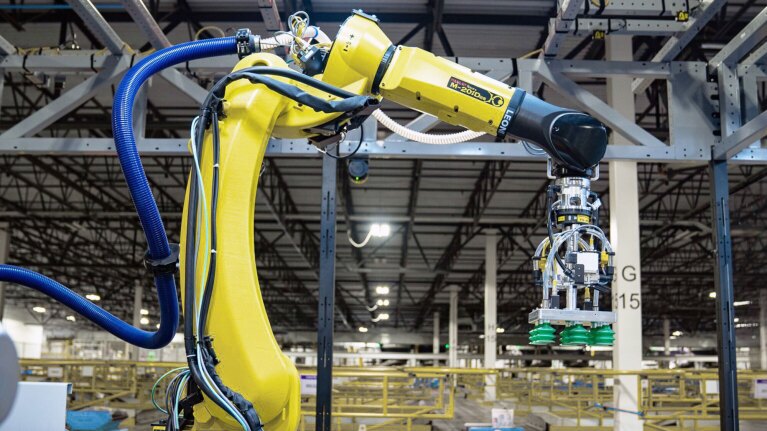
More than 2 billion packages have been sorted by Robin, a robotic system used across our operations network. More than 1,000 Robin robotic arms are now used to handle and sort customer packages before they get shipped, enabling employees to focus their time and energy on other things while also improving safety.
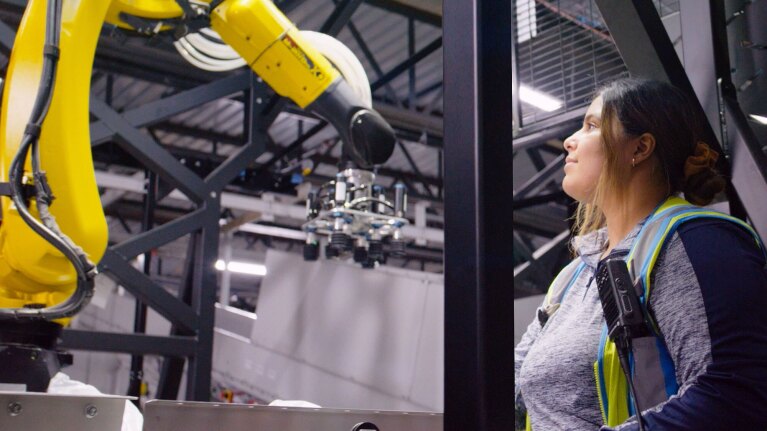
Robin uses visual-perception algorithms to segment, identify, and locate packages. Within the initial six months of the program’s rollout in 2020, we doubled the number of packages Robin’s perception system can pick and we reduced the errors the perception system makes by a factor of 10.

Sparrow is Amazon’s latest robotic arm. The technology was introduced in 2022 to streamline the fulfillment process by moving individual products before they get packaged—a major technological advancement to support our employees. Sparrow is the first robotic system in our warehouses that can detect, select, and handle individual products in our inventory.

Amazon is also testing another robot arm called Cardinal in Nashville. This arm can lift and turn heavy packages of up to 50 pounds in a confined space. It uses AI and computer vision to select a package from a pile, lift the package, read its label, then place it on a cart to continue on its journey.
For more than a decade, Amazon has been at the forefront of innovation in supply chain technology. We take a practical approach, applying cutting-edge technology in sustainable ways that can be useful today for our employees, customers, and the community.
Check out the following articles to learn more about Amazon Robotics:
Trending news and stories
- Meet Project Rainier, Amazon’s one-of-a-kind machine ushering in the next generation of AI
- What’s new for Prime Day 2025? 4 things that make this year’s event different
- See Judge Judy Sheindlin in the trailer for ‘Justice on Trial,’ coming to Prime Video
- How to watch every ‘Jurassic Park’ movie on Prime Video

